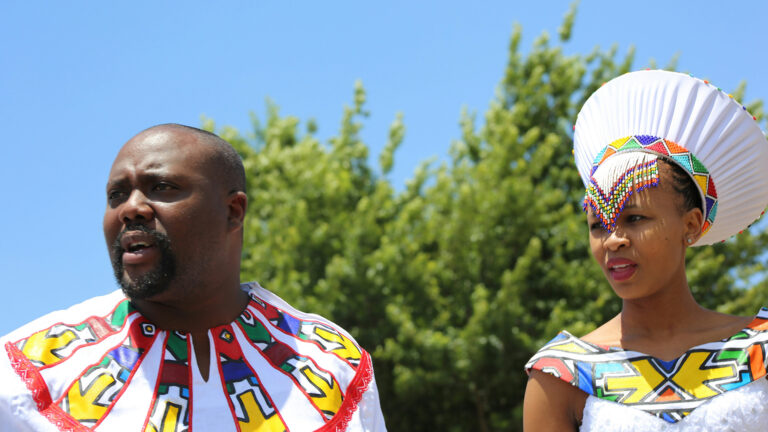You may or may not have heard of the 2022 documentary titled with the controversial question: What is a woman? The documentary follows a conservative political commentator, Matt Walsh, as he interviews people of all walks of life and different political views, asking them to answer the question: What is a woman? The responses vary, but are mostly vague and filled with much emotion. And what the documentary does well to show is just how heated the conversation surrounding gender has become.
There has been a major shift in the way our society thinks about and discusses the notion of gender.
The very fact that we are asking the question of what a man or a woman is, shows that there has been a major shift in the way our society thinks about and discusses the notion of gender. Albert Mohler, in the foreword of the popular book God and the Transgender Debate, writes: “The sexual revolution is fundamentally restructuring our culture’s collective understanding of family, society, and the very meaning of life.” The way we think about sex, sexuality, and gender is hugely different from the way it was understood and discussed even just fifty years ago.
And so it seems that, increasingly, Christians and church leaders are going to be called to defend the biblical truth that human beings are created male and female, in God’s image.
One Answer, in Genesis
God created two distinct genders: male and female, both in his image.
For many of us, we immediately turn to Genesis 1-2. For it clearly and unambiguously teaches that God created two distinct genders: male and female, both in his image (Genesis 1:27). The first two chapters of the Bible teach us two fundamental truths about every human being. Firstly, we are created in God’s image. Secondly, we are created either male or female. But what about the rest of the Bible? Where else can we turn to develop these fundamental truths that we learn about in the creation account?
When we begin to survey the riches of scripture, we start to realise that it is the person of Jesus Christ—the perfect image of God—who is the clearest example of God’s design for his creation.
Looking to Jesus
We saw that Genesis 1 and 2 teach two fundamental truths about human beings: we are created in God’s image; and we are created with a distinct gender. And both of these truths are revealed perfectly to us in the person of Jesus Christ. In Colossians 1:15, Paul says Jesus is: “the image of the invisible God, the firstborn of all creation.” This verse shows us that Jesus reveals God to us, and through him, we can better understand the nature of God.
When we want to better understand fundamental truths about how human beings were created, we must look to Jesus Christ.
John 14:9 teaches us that when we see the Son, we do in fact see the Father. In Colossians 1, Paul doesn’t write that Jesus was made in the image, but that he is the image of God. Jesus Christ, who is both unchanging and who existed for all eternity, is the image of God. He is “the radiance of God’s glory and the exact imprint of [God’s] nature” (Hebrews 1:3). Because Jesus is the original, unchanging image of God, we must come to see that human beings were created in his image. When we want to better understand fundamental truths about how human beings were created, we must look to Jesus Christ. For he reveals God. And he shows us what it means for us to be created in God’s image.
So the question that we can ask is: how can Jesus teach us about gender? Put simply, to understand God’s design for us, and to know whether gender plays a part in that design, we must turn to Jesus Christ who reveals the very image of God in which we were created.
Three Truths Jesus Reveals About Gender
When we look to the the New Testament we learn from the person of Jesus Christ, his teaching, and through the resurrection, that human beings are gendered. We are either male and female.
1. He Was Very Much a Man
Firstly, Jesus was born and lived as a man, with a physical body. The point is simple but, as many debates in church history show us, incredibly powerful. Jesus Christ was fully man. He lived with a physical body. He was gendered.
If we look, for example, at the account Luke gives, we see this truth recorded. Jesus was born physically as all babies are and is described as Mary’s first born son (Luke 2:7). Jesus was circumcised after eight days, once again affirming his gendered nature as a male boy (Luke 2:21). And Jesus is described as growing from childhood to adulthood, both in strength and stature, as well as wisdom (Luke 2:40).
Jesus Christ was fully man. He lived with a physical body. He was gendered.
And so, throughout his life, the scriptures affirm the fact that Jesus had a physical and fixed gender. One author, Rob Smith, argues that Jesus’ “earthly life and identity were shaped by his bodily sex and the gendered roles and relationships he had as a man, son, brother, male friend.” If the perfect image—whom we’re created in—had a physical body and gender that informed the way he lived, informed his relationships, then we must see ourselves in the same light. Every human being is born in his image, with a fixed gender, expressed in our physical body, either male or female.
2. Jesus Affirmed Two Genders
Secondly, Jesus’ teaching affirms that there are two distinct genders, as revealed in the creation account. In Matthew 19:4-5, when responding to a question about divorce, Jesus points back to the creation accounts. He highlights God’s original design and will. Jesus quotes the original scriptures, reinforcing the truth that human beings are made male and female, and that the creation of two genders was to complement one another in a perfect relationship.
Jesus affirms the biblical truth that all people are gendered, created either male or female.
This may be only one example. But it demonstrates that it is not only in his person but also in his authoritative teaching that Jesus affirms the biblical truth that all people are gendered, created either male or female. God himself taught that there are two genders. And, ultimately, if we hold to the authority of God’s word, we cannot deny the reality of being created either male or female.
3. The Resurrected Jesus was Still Male
Finally, Jesus’ resurrection body is gendered. In the resurrection of Jesus, we are given the hope of a resurrected body, free from sin, disease, and death. And, again, Jesus’ resurrection body was a physical, gendered body. If we look at the Gospels, when Jesus appears to his disciples, they are able to recognise him (John 21:12), to touch his physical body, see him (Luke 24:39), and worship him as their Lord and their teacher who they had known before his death and resurrection (Matthew 28:9-10; Luke 24:52). Jesus retained his gender in his resurrection body as a man.
Jesus retained his gender in his resurrection body as a man.
This example that we have in Jesus is true for us as well. The perfected, physical resurrection body—which will once again retain the perfect image of God (1 Corinthians 15:48-49)—is gendered. God’s design for human beings in Genesis 1:26-27 is seen once again in the resurrected body, in a body that will be either male or female. Christ’s resurrected body once again reinforces God’s gendered design for all human beings.
What About Women? Jesus Was a Man
This may be the question that comes to mind after reflecting on the nature of Jesus. Jesus was a man. What can he teach us about gender concerning women? How do we see ourselves as women in the example of Jesus? While Jesus took on flesh and became a man—and gives us the perfect example of biblical masculinity—the truths listed above apply to women as well.
In his life, teaching, and resurrected body, Jesus reveals God’s design in creation.
Both men and women were created in the image of God (Genesis 1:26-27). Thus both women and men were made in the likeness of Christ. Just as Jesus was born in a physical, gendered body, so too are women born in physical and gendered bodies. In his teaching, Jesus affirmed the reality of two distinct, but complimentary genders, both male and female. And finally, as we see in his resurrected body, our gender will not change in the resurrection body. Even in Jesus’ treatment of women throughout the New Testament, he affirms their value as made in God’s image.
In his own body and life, in his teaching, and in his resurrected body, Jesus reveals God’s design in creation. Because Jesus is the image of God, in whose likeness we are created, we must look to him as the example for all of humanity. He is the image that we must trust in for a full and clear picture of who we were created to be.













